Cyclocross basics, what you need to practice to get faster
Cyclocross is a challenge for first-time enthusiasts. Mastering cornering, agility on difficult surfaces such as sand, as well as knowing how to get on and off the bike and how to carry it on your shoulder are key to achieving good results.

Technique, a key factor in cyclocross success
Cyclocross is all about technique. The key is to be efficient and lose as little time as possible. Without downplaying the importance of fitness - which of course plays an important role - cyclocross is one of the cycling disciplines where technique is most important.
Getting off the bike
Perhaps the best place to start is here. Any cyclocross course will require riders to get off the bike a few times. This is therefore one of the skills that will need the most practice.
RECOMENDADO

Change wheels if you want to transform your bike's behavior

What bike size do you need? Here's how to find out

How does age affect performance and recovery?

10 tips for safer and faster downhills on road bikes
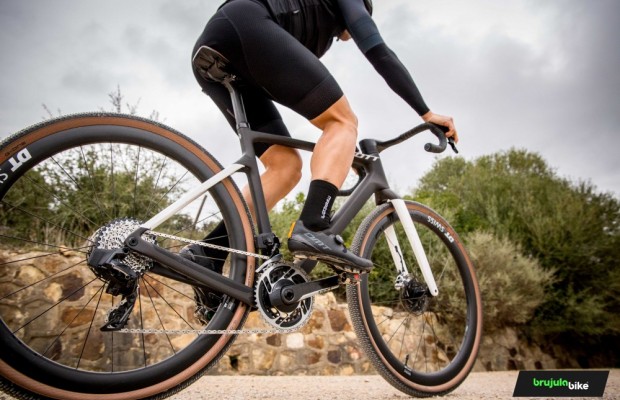
The best gravel groupsets of the moment

How to lose body fat? Differences between losing weight and losing fat
Although there are several ways to get off the bike quickly, most start by releasing your right foot first. Once released, bring it back and round the saddle to place your leg between the bike and your left leg. The right foot will be the first to step onto the ground. As you do so, release your left foot.
Ideally, it is best to know in advance where to get off. This will allow us to know the optimum time to do so, which can be calculated on the basis of two factors.
First, the space with the obstacle or the point at which we have to get off: we should not try to rush to the last moment, but leave a margin to get off in time. On the other hand, speed: we must keep our feet on the ground when we can assume the speed we are going. For this reason, you can slow down with your right foot between your bike and your left leg, and stay in this position until the speed you are able to continue on foot.
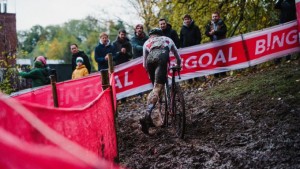
Getting on the bike
It is just as important to know how to get off as it is to get back on the bike and keep pedalling. This will be another skill that will have to be trained repeatedly.
The important thing here is not to stop. The manoeuvre should be started while still running and the bike should be placed next to you if it is not already there. What will save the most time is to jump up: most people have the bike on their right, so you will have to move your right leg to the other side. Try to land with your buttocks on the saddle and then settle into your normal pedalling position. Now all that remains is to engage the pedals.
This technique (along with getting off the bike) requires skill in taking off and putting on the pedals. It is advisable to start practising them at a reduced speed to learn how to do them correctly.
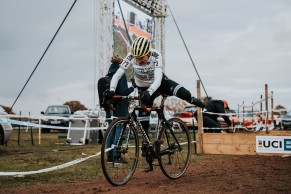
Carrying the bike on your shoulder
This is another of the basics of cyclocross. Anyone who has seen a CX race will know that there is often no choice but to put the bike on the shoulder and run.
The right arm shall grip the down tube so that the top tube rests on the shoulder. The right hand should hold the handlebars. There are two commonly used ways of doing this, by passing your hand either forward or underneath the frame.
The point where the bike rests on the shoulder should be the one that balances the weight of the bike. In this way, it will not move forwards or backwards. In any case, the important thing in this technique is to find a comfortable position that avoids overloading the shoulder.
To perfect the technique, you can try to grab the down tube before releasing your left foot, just before putting your first foot on the ground.
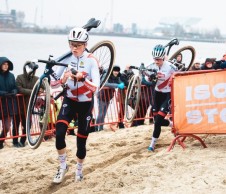
Taking bends properly
Cornering will always be an important factor in shaving a few seconds off the time. There are several elements to take into account here.
First of all, it is possible that the route may change with respect to a similar curve on asphalt. It is essential to observe the ground and detect possible stones or areas that are too muddy. The aim is to look for the cleanest and most grippy line, as it is common to find curves with different surfaces which, in turn, have different grip.
On dry terrain there will be fewer problems, as the grip of the surface will be greater. One thing that can help is to look at other riders' line markings. Following their tracks can make cornering easier. Another factor that can be very useful is weight distribution and, of course, good use of the brakes, which should be applied before the turn.
Facing medium to high speed bends, balance is often needed due to the usual tightness of some of them. A trick that can work is to release the foot on the same side of the curve to stabilise the manoeuvre more.
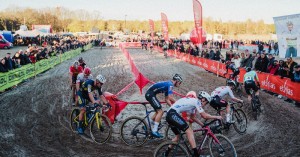
The sand
One of the most common terrains in CX is sand. Mastering this surface will prevent you from losing time, although sometimes you will have to dismount and carry your bike on your shoulder.
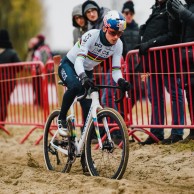
The first thing you will notice when you hit the sand is a drop in speed. Keeping your balance is very important, so you will need to shift your weight to the back of the bike. The tracks can be very useful, as it will be easier to carry the bike over them than over virgin sand.
When riding in the sand, keep the handlebars as straight as possible. Turning the handlebars will cause you to lose more speed and make it easier to fall. On the other hand, it can be an advantage to carry the tyre with less pressure, but at the same time it can be counterproductive for the rest of the circuit.
As you might have guessed, it is unlikely that after reading these tips you will master all these techniques at the first try. So, as always, there is nothing left but to practice and train them over and over again in order to gain time on the clock.